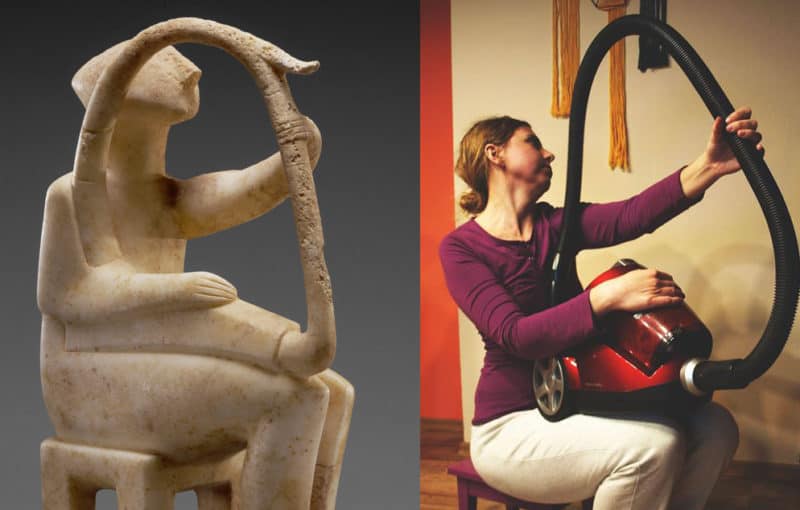Getty Images is a leading provider of stock photos and visual content. When using their images, understanding licensing, choosing high-quality visuals, and adhering to usage guidelines is crucial for creating effective and ethical projects. This guide explores essential best practices to help you make the most of Getty Images while respecting copyright and enhancing your work.
Understanding Getty Images and Their Licensing

Getty Images offers a vast collection of high-resolution stock images, videos, and music media. They operate under various licensing models, primarily “Rights Managed” (RM) and “Royalty Free” (RF). Understanding these licenses is vital. RM typically requires specific usage permissions and expenses linked to the project’s scope and duration, while RF allows broader use but still comes with limitations.
When selecting images, consider whether you need exclusivity or plan to use them repeatedly. Always verify the licensing type to avoid potential copyright infringement. Additionally, familiarize yourself with Getty’s usage rules to ensure your projects are compliant. Some images may have restrictions concerning alterations or usage in certain media, so careful reading of the licensing agreement is essential.
The Importance of Quality Visuals in Projects
Visuals significantly impact how audiences perceive projects. High-quality images can elevate presentations, marketing materials, and digital content, making them more appealing and engaging. They convey professionalism and credibility, enhancing your brand image. In a world flooded with information, compelling visuals can help your message stand out and resonate better with viewers.
Moreover, quality visuals can enhance storytelling, evoke emotions, and create a connection with the audience. An effective image not only illustrates the subject matter but also complements and amplifies the narrative. Therefore, investing in quality images from sources like Getty Images is critical. It ensures your project captures attention while communicating your message effectively and ethically.
How to Properly Attribute Getty Images
When it comes to using Getty Images, ensuring proper attribution is crucial not only for legal compliance but also for respecting the artists and photographers behind the work. Proper attribution is about giving credit where it’s due, and it can enhance the credibility of your project. Here are some key points to keep in mind:
- Follow Getty’s Attribution Guidelines: Always check the specific requirements provided by Getty Images for the images you are using. This often includes crediting the photographer and Getty Images itself.
- Use the Correct Format: The typical format for attribution is to list the photographer’s name followed by a comma and then “Getty Images.” For example: “Photo by Jane Doe, Getty Images.”
- Placement Matters: It’s important to place the attribution where it’s easily visible, typically beneath the image or within the text that references it. Make sure it’s not hidden or hard to read.
- Look for Additional Requirements: Sometimes, the licensing agreement may have unique attribution requirements. Make sure to review these thoroughly before using the image.
- Be Honest: If you’re using an image in a misleading way, even with proper attribution, it can jeopardize your credibility. Always use images in context and align with their intent.
By taking the time to attribute Getty Images correctly, you not only protect yourself legally but also support the artists whose work enriches your projects.
Best Practices for Editing and Using Getty Images
Editing and using Getty Images effectively requires a thoughtful approach to maintain the integrity of the original work while also tailoring it to fit your project’s needs. Here are some best practices to consider:
- Maintain Quality: When cropping or resizing images, ensure that the final visuals remain high-quality. Avoid pixelation or distortion that can occur with poor editing techniques.
- Be Mindful of Copyright: Check the licensing agreements carefully before making alterations. Some images may not allow for editing beyond basic cropping or resizing.
- Don’t Misrepresent: When editing images, avoid altering them in a way that could mislead viewers about the content. Always aim to keep the original context intact.
- Use Filters Wisely: Filters can enhance images but be cautious not to overdo it. Subtle adjustments are generally more appealing and professional than harsh edits.
- Test On Various Devices: After editing, view your images on different screens or resolutions. This ensures your edits appear great to everyone, regardless of the device they use.
By following these best practices, you can effectively use and edit Getty Images while respecting the work of photographers and artists. Editing is an art, so treat it with care!
Common Mistakes to Avoid When Using Getty Images
Using Getty Images can elevate your projects, but there are common pitfalls that can lead to complications. Here’s a rundown of mistakes you want to steer clear of:
- Ignoring Licensing Agreements: Every image comes with specific licensing terms. Make sure to read and understand these, as using an image outside its scope can lead to legal issues.
- Not Crediting the Photographer: If the license requires it, always give credit to the photographer or Getty Images. It’s not just good practice—it’s a sign of respect for their work.
- Using Images at Low Resolution: Always choose the correct resolution for your needs. A low-resolution image on a large display can appear blurry and unprofessional.
- Neglecting to Edit Appropriately: While you can modify images, overdoing it or not adhering to the licensing terms can be problematic. Ensure your edits align with the allowed usage.
- Forgetting to Check Up on Permissions: If a project is long-term, remember to verify that your licensing still covers your usage over time, especially if you need to extend a campaign or update materials.
By being aware of these common mistakes, you can confidently use Getty Images in your projects without the worry of running into trouble down the line.
Leveraging Getty Images for Social Media and Marketing
When it comes to social media and marketing, visuals are key to engagement. Getty Images offers a treasure trove of high-quality visuals that can help elevate your brand presence. Here’s how to make the most of them:
- Use Eye-Catching Images: First impressions matter! Choose images that are not only high-quality but also resonate with your audience’s emotions. A stunning visual can often convey your message more effectively than words.
- Creating Themed Content: Use Getty’s search tools to create themed campaigns. Whether it’s seasonal imagery or pictures that align with a current event, a cohesive theme can help strengthen your brand identity.
- Incorporating Graphics and Text: Don’t just post the photo—enhance it! Add overlays, quotes, or branding to make your images more relatable and shareable. Tools like Canva can help you with this.
- Storytelling Through Sequences: Use a series of images to tell a story. This can be particularly effective on platforms like Instagram where users enjoy visual narratives.
- Monitor Engagement: After you post, keep an eye on the analytics to see how well your images perform. This data can help you refine your future content strategy.
By skillfully integrating Getty Images into your social media and marketing efforts, you can capture attention, promote engagement, and enhance your overall brand image!
Tools and Resources for Using Getty Images Effectively
When working with Getty Images, leveraging the right tools and resources can enhance your experience and streamline your workflow. Here’s a handy list of tools and resources that can help you make the most of your Getty Images experience:
- Getty Images API: If you’re a developer, consider using the Getty Images API. It allows for seamless integration of their extensive library into your own applications or websites, enabling you to search, retrieve, and even purchase images programmatically.
- Lightbox Feature: Use the Lightbox feature on the Getty website to curate your favorite images. This tool helps you organize images for upcoming projects or pitches, making it easier to compare options and finalize your selections.
- Image Editing Software: Pair Getty Images with powerful editing tools like Adobe Photoshop or Canva. After downloading images, you can edit them to fit your brand’s style or project requirements.
- Image Rights Management Tools: Consistently check the usage rights using platforms that manage digital rights. Staying informed about licenses ensures you’re compliant while using Getty Images.
- Online Tutorials and Webinars: Look for tutorials or webinars offered by Getty Images or third-party creators. These can provide insights into best practices, new features, and tips on effectively using the vast library.
By utilizing these tools and resources, you can ensure that your use of Getty Images is effective, compliant, and perfectly tailored to your needs, making your creative projects shine!
Conclusion on Maximizing Your Use of Getty Images
In conclusion, effectively using Getty Images in your projects can elevate your visual storytelling and enhance your content’s overall impact. Here are some key takeaways to help you maximize your use of this resource:
- Understand Licensing: Always clarify the licensing details of the images you intend to use. Whether you opt for royalty-free, rights-managed, or editorial usage, knowing the specifics will safeguard your project from legal issues.
- Curate Thoughtfully: Don’t just pick the first image that looks good. Take the time to curate a selection that resonates with your intended message and audience. A thoughtful selection can significantly impact engagement.
- Use Metadata: Dive into image metadata for creative ideas or inspirations. Getty Images often provides useful context that can influence how you present the content.
- Leverage Editorial Resources: Don’t overlook the power of editorial imagery. Getty Images offers a wide range of news and cultural content that can add depth to your projects, especially for current events or thematic explorations.
- Stay Updated: Regularly check for new content and trends within Getty’s library. This not only keeps your projects fresh but also ensures you’re aware of modern design aesthetics.
By implementing these strategies, you’ll be well on your way to making stunning projects that harness the full potential of Getty Images. Happy creating!


